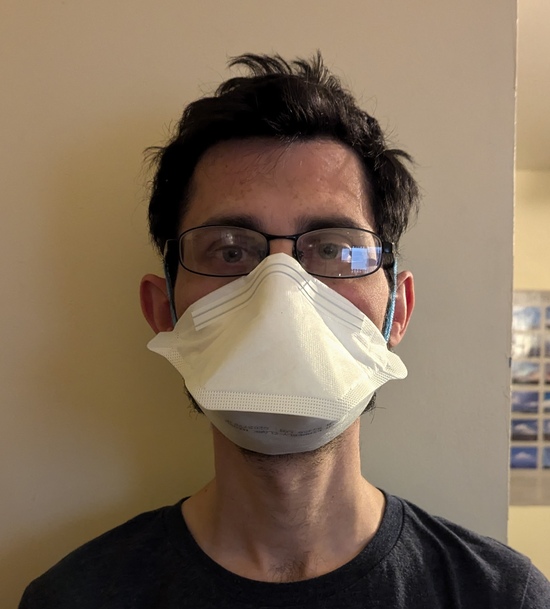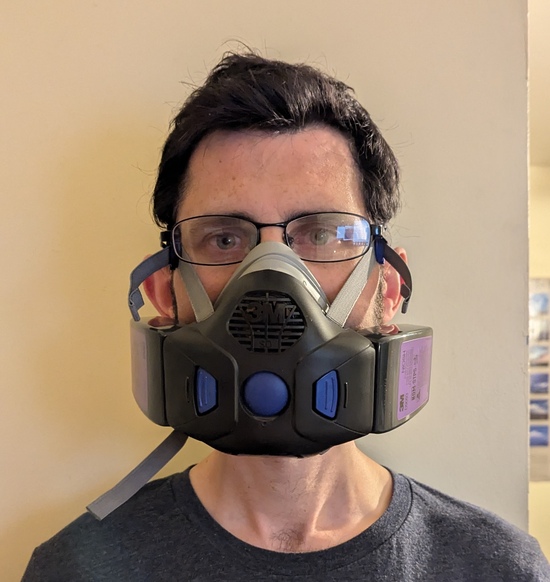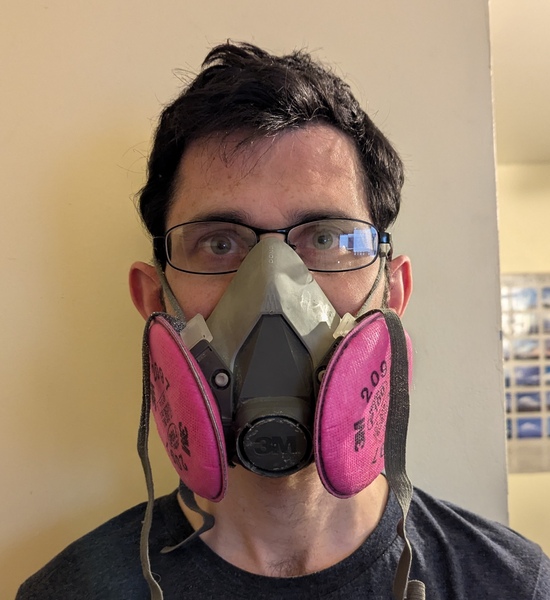Mask and Respirator Intelligibility Comparison |
December 6th, 2024 |
| bio, covid-19, masks, tech |
I compared four options:
- No mask
- Kimtech N95 Duckbill disposable (my favorite!)
- 3M HF-802SD reusable respirator with speaking diaphragm.
- 3M 6200 previous-generation reusable respirator without speaking diaphragm.
I recorded myself on my MacBook with Audacity, reading the same paragraph in with each setup:
(wav).
(wav).
(wav).
(wav).
To me, the no-mask version is by far the clearest, but if I only heard the N95 version I probably wouldn't notice that anything was off. The two reusable respirators are the least intelligible by a good bit, and the speaking diaphragm helps a lot less than I'd hoped.
Here's a frequency plot (script, script):
Unfortunately, since I don't have a great sense of how important each frequency range is for understanding speech, I don't find this all that helpful. But maybe you do?
(One thing I do really like about the new version of 3M's reusable respirator, though, is the button for fit testing. You press the button and it closes off the filters, and if you're able to breath in then the mask is not sealed.)





I've wondered about adding a microphone to the inside and speaker to the outside. Such tech is pretty cheap these days, so it wouldn't add much overhead to a reusable respirator.
The overhead is mainly the "fixed cost" of engineering something that works well, which suggest re-using some of the engineering costs already incurred in making it possible for a person to make a hands-free phone call on a smartphone.
I was surprised to find that I had a much easier time understanding someone when they were wearing one of those masks with the clear plastic window so you could see their lips. Is it because of the acoustic properties of the clear plastic, or have I been subconsciously reading lips this whole time?
Off-topic: most things (e.g., dust particles) that land in an eye end up in the nasal cavity, so I would naively expect that protecting the eyes would be necessary to protect oneself fully from respiratory viruses:
https://www.ranelle.com/wp-content/uploads/2016/08/Tear-Dust-Obstruction-1024x485.jpg
Does anyone care to try to estimate how much the odds ratio of getting covid (O(covid)) decreases when we intervene by switching a "half-mask" respirator such as the ones pictured here for a "full-face" respirator (which protects the eyes)?
Note that due to the difference being greater at higher frequencies, the effect on speech intelligibility will probably be greater for most women than for you.
We can see the diaphragm has some resonance peaks that increase distortion. Probably it's too thick to help very much, but it has to resist the pressure changes from breathing.
Sounds like I should try repeating this with someone with a higher voice!